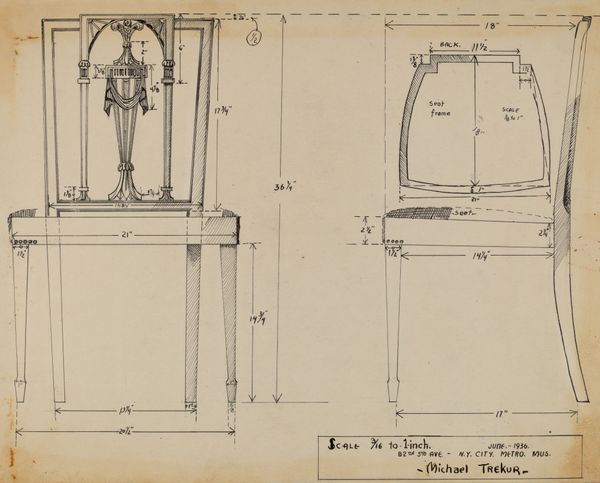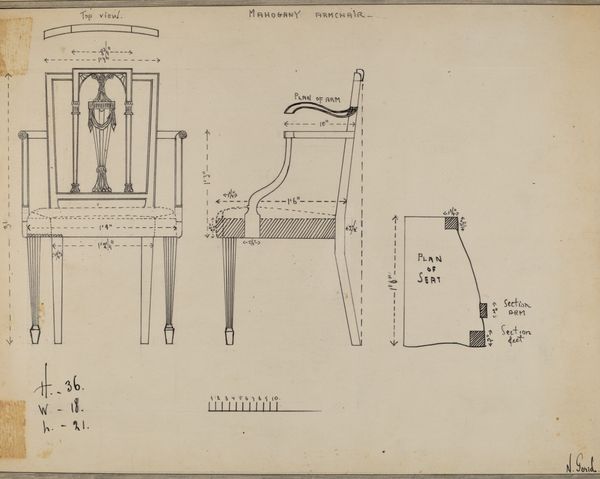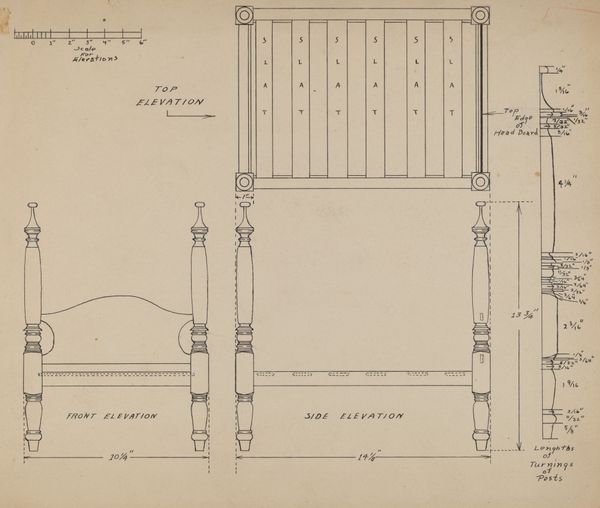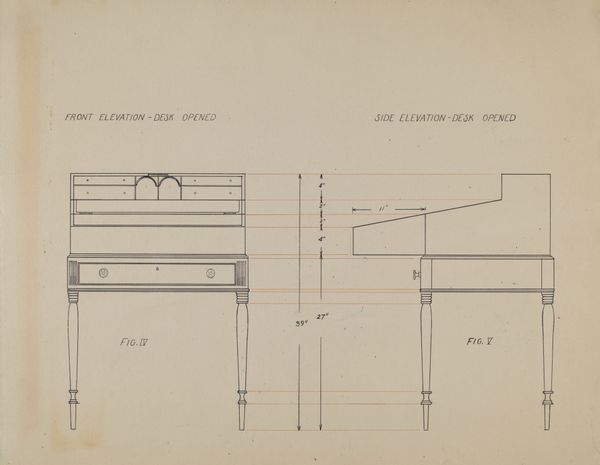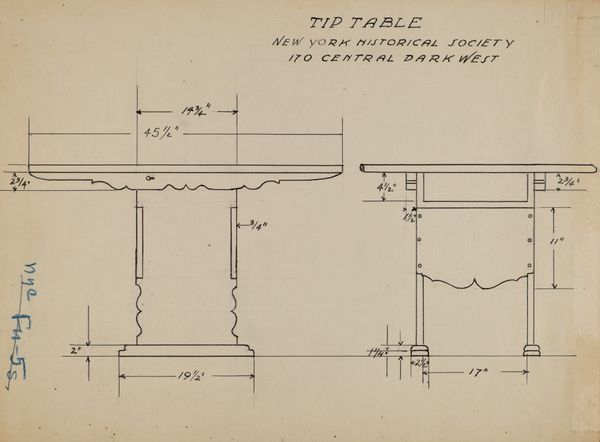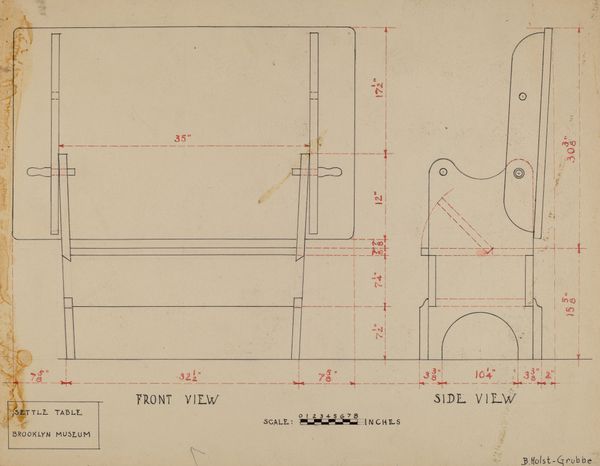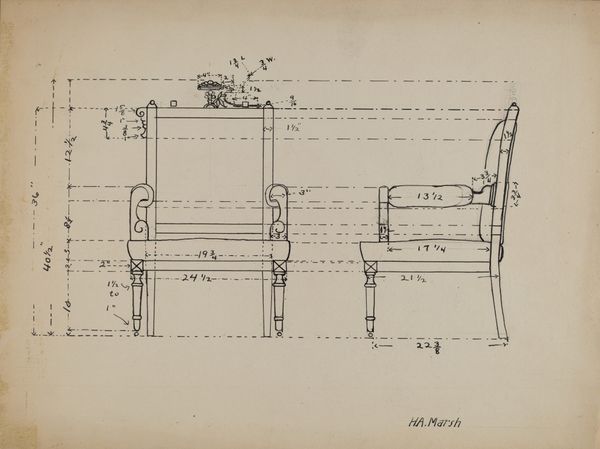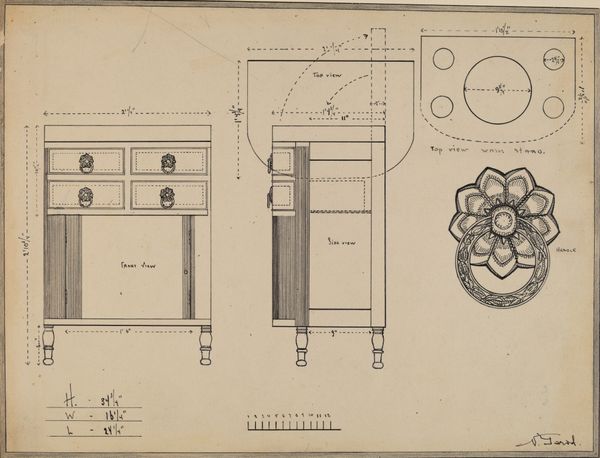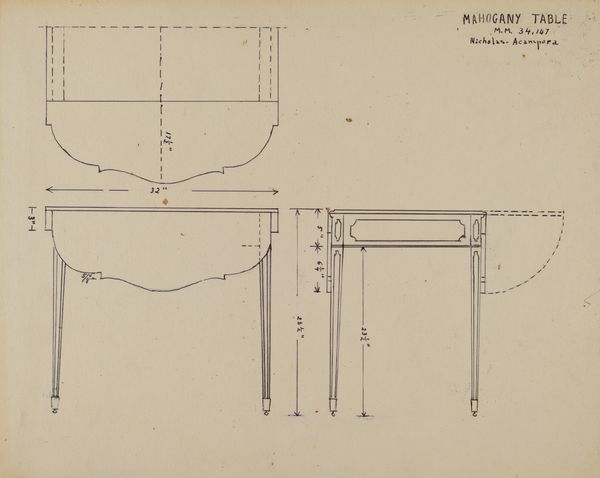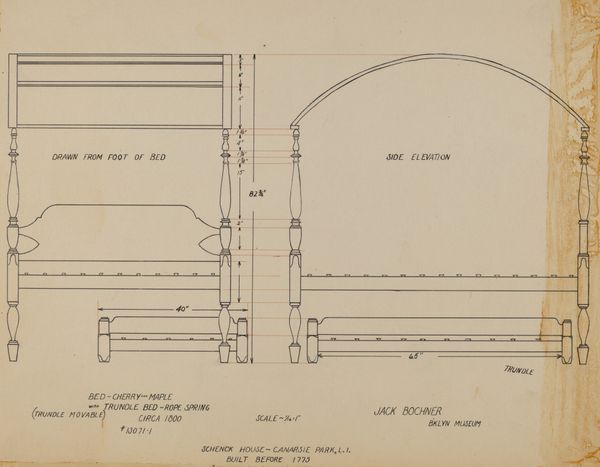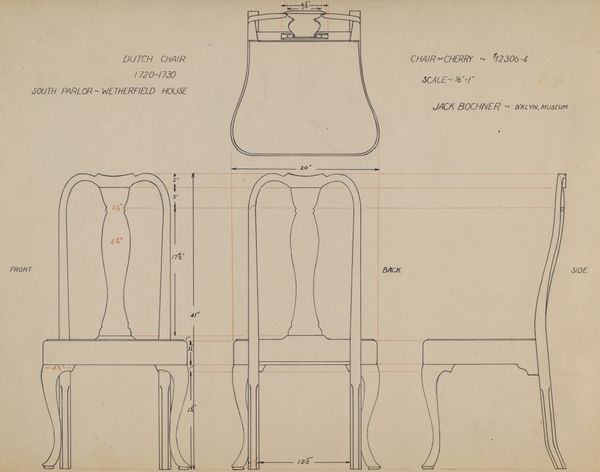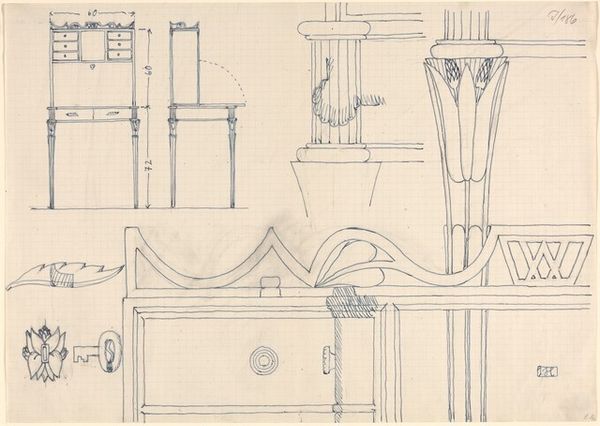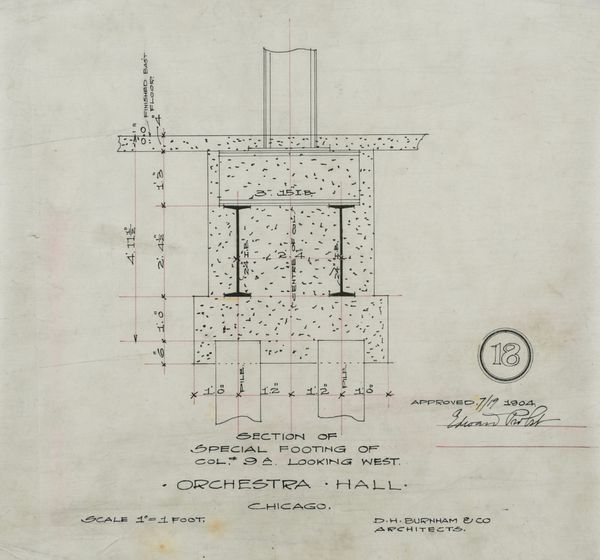
drawing, paper
#
drawing
#
paper
#
geometric
Dimensions: overall: 22.9 x 29.2 cm (9 x 11 1/2 in.) Original IAD Object: none given
Copyright: National Gallery of Art: CC0 1.0
Curator: This intriguing piece, "Side Board," is a drawing created by John Dieterich in 1936. It's rendered on paper, using a combination of drawing techniques. What are your initial thoughts? Editor: Immediately, I'm struck by the utilitarian nature of this work. It's not just art; it's a plan, a guide for something to be constructed. The colored swatches along the side give it a curious, almost playful air against the geometric precision. Curator: Indeed. The interplay between those elements is compelling. Notice the attention to proportion, the meticulous labeling. Dieterich is concerned with clarity and the faithful representation of form. The visual language employed here relies heavily on orthographic projection. Editor: And consider the materiality—it’s not just the drawing itself, but the envisioned sideboard made of wood, glass perhaps, and metal detailing. I imagine Dieterich considered the grain, the joinery, and the embodied labor required for its construction. Were these designs realized? Did factory workers or independent craftspeople execute the piece, and how did the design translate into a real object? Curator: The drawing, acting as a blueprint, directs the execution and assembly. The artist also annotates the artwork with important information, namely: the silver ware containers are not attached to furniture, making each element distinct formal objects in space. The urn-like containers stand on their own formal accord. Editor: The annotations provide some contextual data for understanding both functionality, construction, and materials. I’d love to see the end product. Did Dieterich value machine-made exactitude, or the irregularities and the craftsman’s individual touches? The use of colored swatches certainly seems to lend some aesthetic personalization to the utilitarian purpose of the document. Curator: An interesting point. In conclusion, Dieterich's "Side Board" functions as both blueprint and aesthetic record—a duality of purpose. Editor: Absolutely, and in exploring Dieterich's sideboard plan, we uncover the value that the plan becomes as compelling as a "real object". The process, and the artistic intent is certainly made visible in this drawing.
Comments
No comments
Be the first to comment and join the conversation on the ultimate creative platform.
